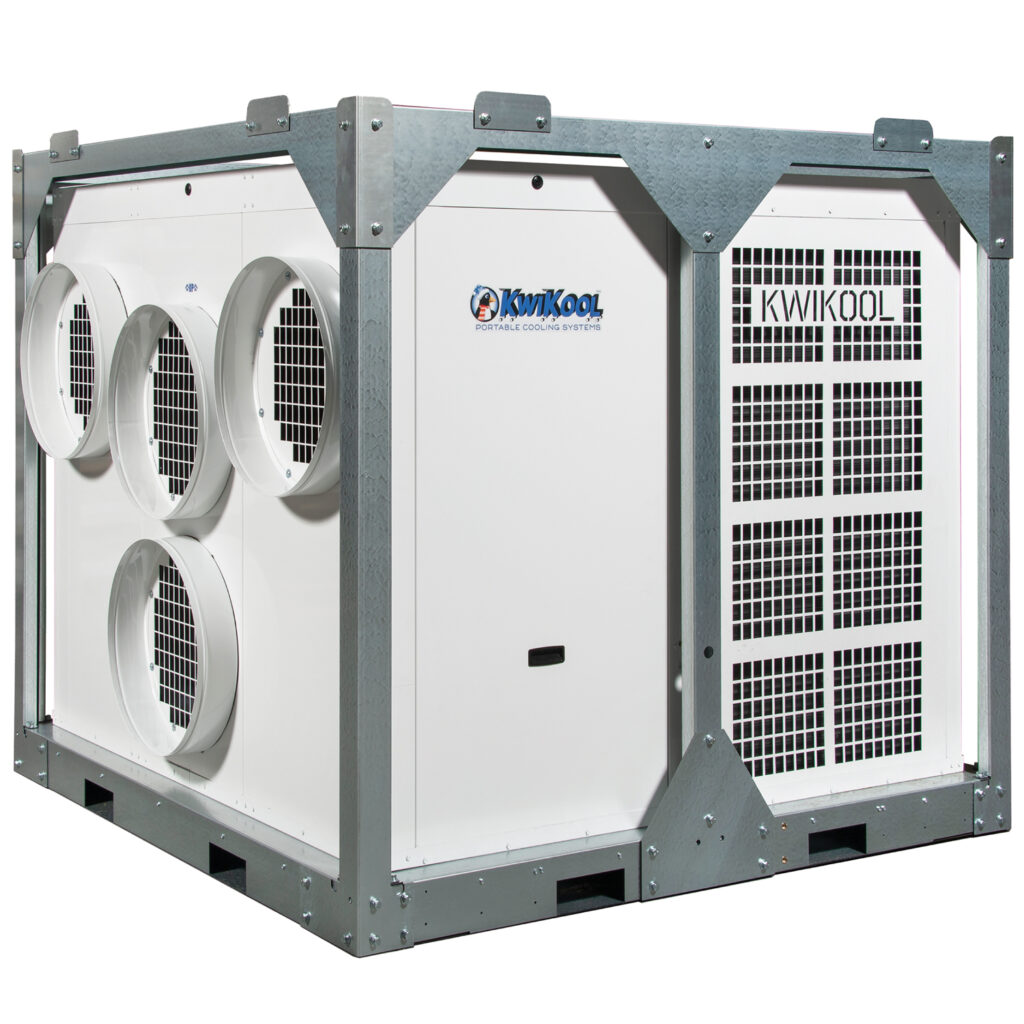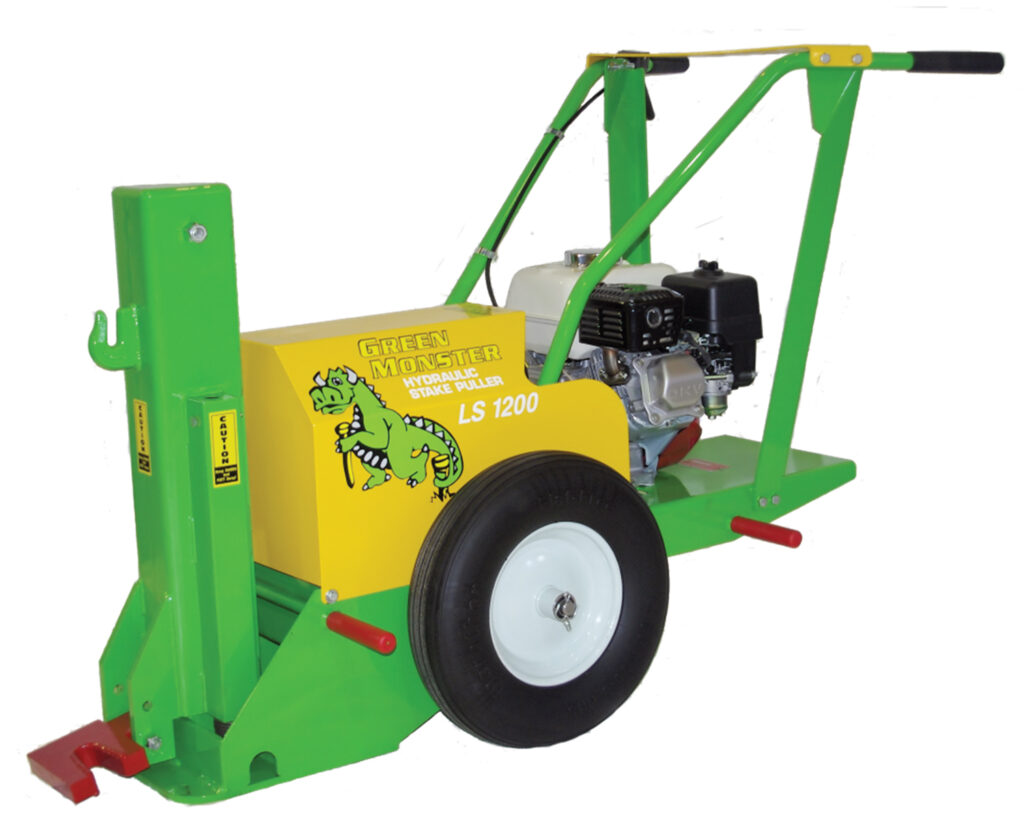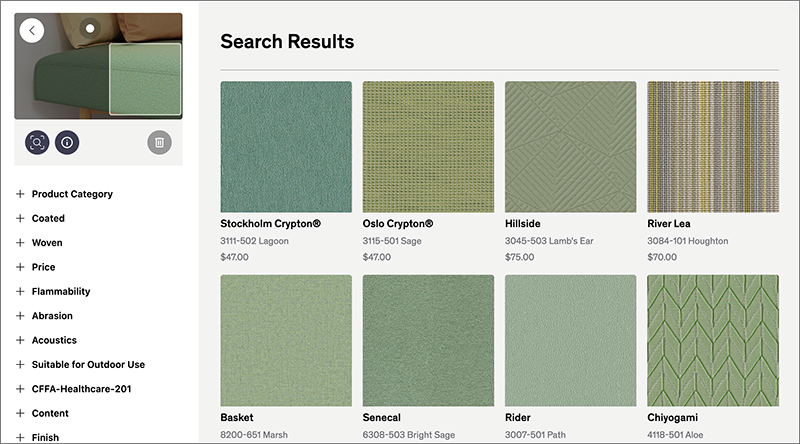It’s always been important for tent and event rental businesses to operate as efficiently as possible. But as this industry faces the challenges of labor shortages, supply chain disruptions, tariffs and even climate change, the need to do so has grown more acute.
Of these factors, the dwindling workforce probably is the most immediately worrisome. This issue can undermine profitability through installations and removals that take longer, limiting the number of jobs a rental business can accept. Weather extremes are another concern. As days grow hotter, particularly during the busiest seasons for tent/event rental operators, the need for effective climate control increases.
However, there are products designed to help alleviate these challenges. In the following article, we’ll look at a few products on the market that can help tent and event rental companies meet or exceed customer expectations.
Removing the bottleneck
The SOLUTIONSCMR conveyor belt system is designed for drying tent vinyl. Headquartered in Miami, Fla., SOLUTIONSCMR has to date installed more than 20 of these systems for tent and party/event rental businesses, with more to come, says director Luis Romero.
The linear conveyors vary from 350 feet up to 1,500 feet and are able to hang fabric amounts two to three times their size. The vinyl is hung at waist level, then sent up to dry and unload the next day, ready to rent, says Romero.

“When done manually, drying the tent vinyl is a bottleneck,” says Romero. “With the conveyor, you will do the same amount in half the time, saving on labor, and you can double the production. It’s very simple to use—just clip the tent vinyl and raise it up. It has a control panel with different speed variations and also stop-and-go, an important safety feature.”
The conveyor system not only saves time, but it also reduces replacement costs since the vinyl is thoroughly cleaned and dried before storage, keeping mold and mildew from forming and damaging the material. Drying this way also prevents tearing. Consequently, the vinyl lasts longer and remains in better condition, boosting the ROI.
Maintenance is fairly straightforward, requiring among other tasks lubricating the chain every four months and adjusting it every six months. The control
panel identifies any issues and has the direct phone number to the engineers who built the system should any questions arise. The conveyors are very sturdy, says Romero, noting that one SOLUTIONSCMR installed 20 years ago is “still running like new.”

Keeping it chill
As climate change continues, cooling systems have become even more essential for tented events. After all, nothing brings a celebration to a premature close faster than a miserable, sweaty experience. But finding the right cooling unit for the job is trickier than one might imagine. According to Mike Renier, vice president of sales for KwiKool® Portable Cooling Systems, a common mistake is failing to account for all the heat generated by those inside the tent.
“Even when sitting, an adult will generate 500 BTUs of heat,” he explains. “For example, 100 people will produce four tons of heat. Insufficient cooling capacity likely means an application failure to hold the temperature at the desired level. The customer will complain and may refuse to pay for the service.”
Headquartered in Stafford, Texas, KwiKool offers 53 models divided into five series based on application type. Included is the KPO series Indoor/Outdoor High Static model, which Renier says has been a rental company favorite for more than 17 years.

“This is used for difficult temporary cooling and heating applications that require long ducting or high-static air pressure for maximum air-temperature circulation,” he says. “Within the KPO series are 12 basic models in 5-, 12- and 25-ton capacities.”
High-static air conditioners offer several advantages. A big one is that the equipment can be placed up to 75 feet away from the tent, preventing equipment noise from disrupting the event. These units also provide maximum cold air coverage, reducing the chances of encountering hot spots within the tent.
How to keep things running smoothly
Renier has several suggestions, starting with inspecting the units after every rental. Clean the coils and change the filters at least monthly. Inspect the condenser belt every three months, replacing it if there are signs of wear. Monitor appearance and performance; for example, checking the “temperature differential between the cold-air supply and return,” says Renier. If this drops below 15 F, there may be a mechanical issue. He also suggests paying particular attention to the evaporator.
“A frozen evaporator coil is a sign of insufficient airflow, possible from a dirty air filter or blocked coil fins,” he explains. “Failure in the field is the worst outcome for a rental company since it affects its reputation and repeat business opportunities.”
As a safety precaution, always have a qualified electrician hook up the unit to the proper power source and electrical cable.
Useful tip: To find the best match between equipment and event, inquire about the customer’s expectations and desired temperature, says Renier. Other considerations include the type of space, square footage and any additional equipment involved (cooking stations etc.) since this could influence cooling needs. Also identify the available type of electrical service (115V, 230V or 460V).
“Capacity requirements are critical,” he says.

Reducing labor requirements
Andy Mattrick, president and shareholder of Tent OX, says tent rental companies they encounter express “significant concern” over the labor shortages that have persisted ever since the onset of the pandemic.
“Whether it pertains to seasonal assistance or general labor quality, we consistently hear about high turnover rates due to the demanding nature of labor requirements and competitors with increased wage levels,” says Mattrick, adding this situation is preventing some tent rental companies from expanding their operations even in the face of strong client demand.
Located in Mechanicsburg, Pa., Tent OX offers an integrated system consisting of 13 tools and attachments specifically designed for tent installations using an articulated loader. This combination of tools and loader allows tent installations to proceed faster, more efficiently and with fewer workers, says Mattrick.
Tent OX has developed an authorized dealer relationship with Avant®, manufacturers of Avant loaders. Under this agreement, Tent OX distributes the articulated loaders to the North American tent rental industry. Tools and attachments are distributed globally.
There are six different loaders available with lift capacities ranging from 700 pounds up to 4,200 pounds. According to Mattrick, the most commonly purchased model is the 528, offering a lift capacity of 2,100 pounds. However, as tent rental companies have expanded, many have incorporated different models of these loaders into their inventories. As such, the 755 loader with its lift capacity of 3,800 pounds has become increasingly popular. Still, over the years, the 528 has held on to its best-seller status, says Mattrick.

How to keep things running smoothly
The loader’s initial, and most critical, service should happen at 50 hours, says Mattrick. Dealers will flush all the fluids and replace the engine and hydraulic filters. Subsequent maintenance should take place every 250 hours.
“For an average seasonal rental business that operates the machine steadily for six to seven months per year, this results in approximately 250 hours of use per season,” Mattrick explains. “This schedule allows for end-of-season servicing while monitoring fluid levels and grease points during operation.”
Indications there could be issues requiring attention are abnormal noises coming from the engine or fluid leaks observed when the loader is stationary/parked or on the trailer. Thoroughly reading the manual may help avoid problems; also review the Tent OX tool manual, he advises. This provides a checklist of procedures that should be followed, such as inspecting the tires, checking oil levels, looking for dents/cracks on the machine’s panels and keeping an eye out for lack of lubrication.
A common safety mistake Mattrick observes is drivers sitting on a fastened seat belt rather than buckling them around their waist as intended. Over time, this will cause the seat-belt sensor to break, preventing the machine from moving. Other safety precautions include using PPE (personal protective equipment) such as hearing protection, safety glasses, gloves, hard hats, steel-toe boots and even reflective uniforms since operators frequently exit the machine to move equipment or change tools.
Useful tip: Although marketed for driving and pulling stakes and raising center poles, the loaders and Tent OX tools also can help quickly and efficiently transport materials, taking the place of two-wheel dollies, pallet jacks and carts. They can be used to unload palleted equipment off trucks for warehouse storage.
“[This] will not only maintain crew energy levels but will also reduce weekly payroll costs,” Mattrick says. “Additionally, it provides a safer working environment.”

Increasing efficiency, reducing injuries
Ask any tent installer, pulling stakes ranks among the most frustrating and tiresome part of the job, says Kenny Puff, president of Green Monster Manufacturing. It’s time-consuming as well, a situation worsened by labor shortages, he adds.
“This scarcity drives up labor costs and can lead to project delays, impacting the timely setup and takedown of event tents and/or limiting the number of events a company can handle,” Puff says.
Green Monster specializes in providing stake pullers, drivers and other installation equipment, with the Elmsford, N.Y.-based company serving clients across the U.S. and Canada (worldwide shipping is offered). The company’s “flagship model” is the LS 1200 Hydraulic Stake Puller, used by the industry for more than 20 years.
The compact unit fits comfortably into a truck for easy transport and requires just one operator. It’s designed for quick and efficient stake removal, saving time and reducing the likelihood of incurring on-the-job injuries and resultant worker compensation claims. The LS 1200 is battery powered but the company also offers a self-propelled version, the LS 2200. This model pulls itself forward—no pushing required—and offers variable speed drive, says Puff, adding that the LS 1200 remains the company’s “bread and butter.”
“Green Monster was designed to be a hands-free operation,” he says. “Your hands never leave the handle and your hands never touch the stakes.”
How to keep things running smoothly
Regular maintenance is essential. Puff advises checking the oil before and after each use and also inspecting the hardware to ensure it’s properly tightened. He suggests following Honda’s maintenance chart to keep the engine running at peak performance. Pay attention to warning signs such as idling issues, fluid leaks, unusual noise or a drop in performance, which could signal problems with the engine or a hydraulic line. Addressing these promptly will avoid further damage, he says.
He also recommends following OSHA standard safety precautions, including wearing PPE (hard hats, gloves, boots and hearing protection), along with keeping hands and feet away from the jaw and lifting tower when in operation.
Useful tip: “Properly sizing and having the right equipment is essential for maximizing efficiency of labor and inventory during both installs and removals, helping to streamline the process and ensuring everything runs smoothly,” Puff says. “Also, every installer should have a set of their own hand tools. There should be no shared hand tools. It all comes down to time.”
Pamela Mills–Senn is a freelance writer based in Seal Beach, Calif.








Leave A Comment